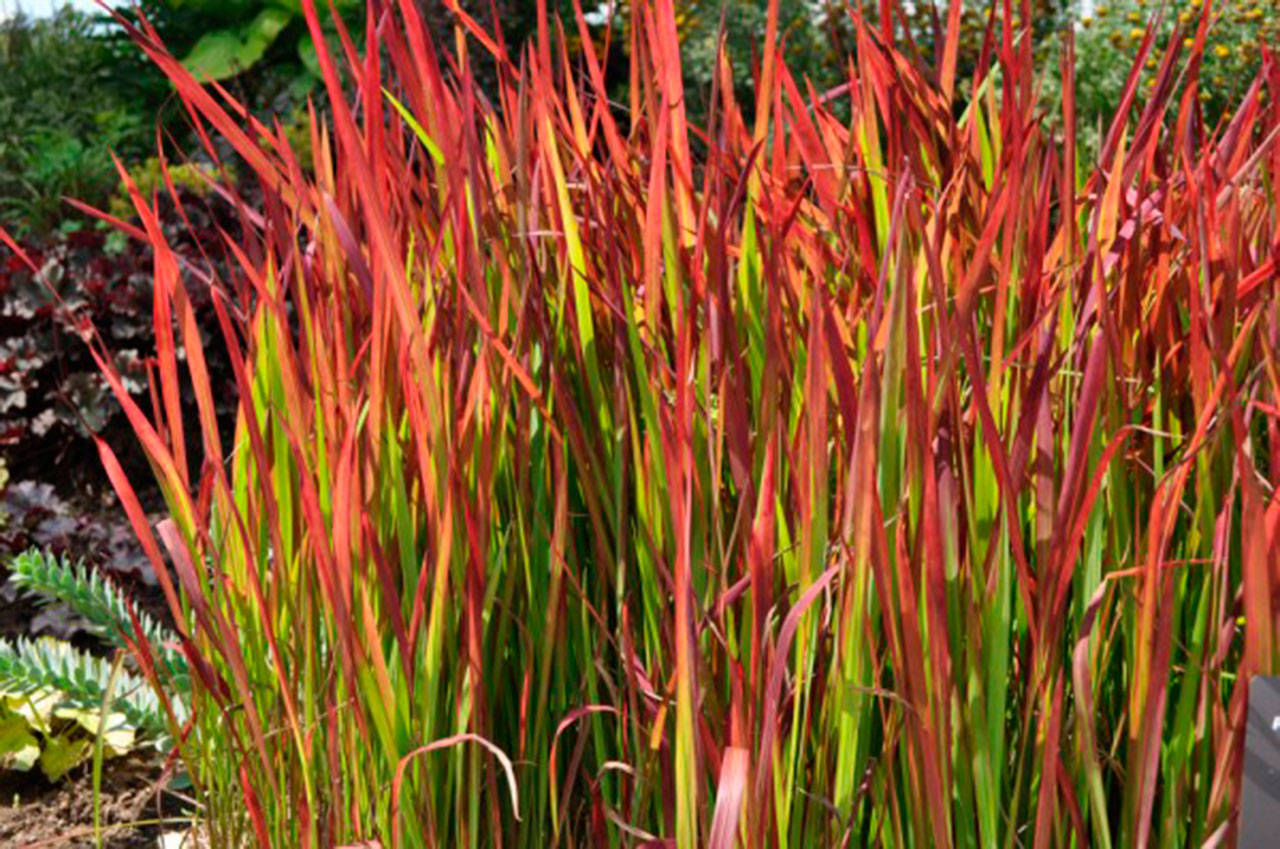By Steve Smith
Ornamental grasses are an interesting class of perennials. They have some unique qualities that make them an essential part of my borders.
Unfortunately, many gardeners see them as weeds that either need to be sprayed with Roundup or trimmed with a Weed-Eater.
Ornamental grasses can be used in many ways: from bold specimen subjects (like Pampas grass) to large massed plantings waving in the breeze, or as low groundcover, edging or even in containers. Some grasses are grown for their colorful foliage in green, gold, red, cream or white – sometimes even striped or banded. Others may be valued more for their showy flower plumes, spikes or seed heads. Several kinds provide dramatic and lasting interest throughout the winter. Don’t stressing about these grasses spreading all over your garden. Almost all ornamental grasses sold today do not run. Rather, they are clumping varieties that are very well-behaved.
The selection of grasses has never been better, with an astounding range of height, spread, color and flowering habit. There should be room in every garden for at least one variety, as they can fill a variety of functions. Tall, upright-growing types create visual interest, especially when used toward the back of the border. Their fine textures contrast nicely against the coarser foliage of broad leaf shrubs or perennials. Medium-sized grasses are effective when massed together, particularly in gardens with a low-maintenance emphasis. Spring flowering bulbs combine well with these for early season interest. Low-growing grasses are ideal for edging around shrubs or combining with spreading evergreens. When mass planted, they will form an attractive low maintenance groundcover.
Grasses can be divided into two basic groups, based on their growth cycles:
•Cool-Season Grasses: These begin growth in early spring, reaching their full size before summer. They are usually low- to medium-sized plants and most are evergreen. Some may actually brown out in hot summers. Clipping or mowing in July right after their bloom cycle encourages lush regrowth for fall.
•Warm-Season Grasses: These begin growing in late spring, flower, and set seed in late summer or fall, and often provide great fall color. They should be pruned back in late February or early March. The single most-important maintenance rule for growing healthy, attractive grasses is to cut foliage back at least once a year. Cut back grasses just as new growth appears. For most grasses that is in early spring. Warm-season grasses are generally cut to within a few inches of the ground. Cool-season grasses are usually trimmed down to two-thirds of their full size. Ornamental grasses can fill difficult garden niches. Many species are drought tolerant and will thrive on neglect, once established. Conversely, there are several varieties that do well in damp or boggy soils – some types even thrive in standing water. There are grasses for full sun or dense shade, clay or sandy conditions, and acid or alkaline soils. If you have yet to garden with ornamental grasses, hopefully you will give them a try this summer and fall.
Steve Smith is the owner of Sunnyside Nursery in Marysville and can be reached at info@sunnysidenursery.net


